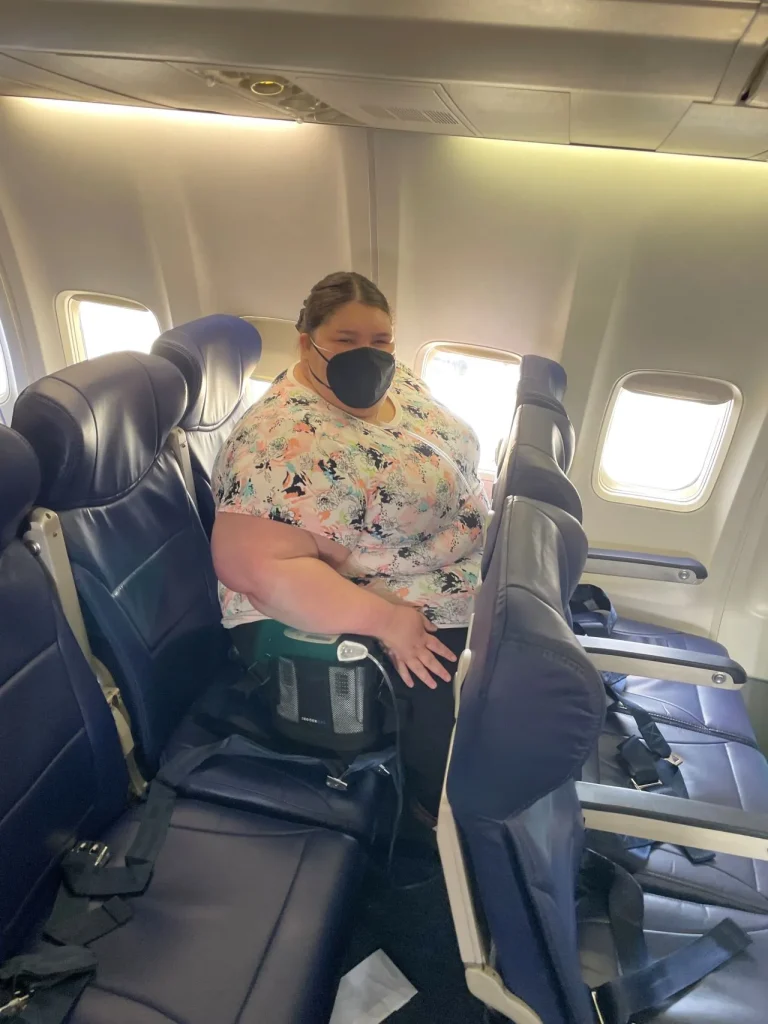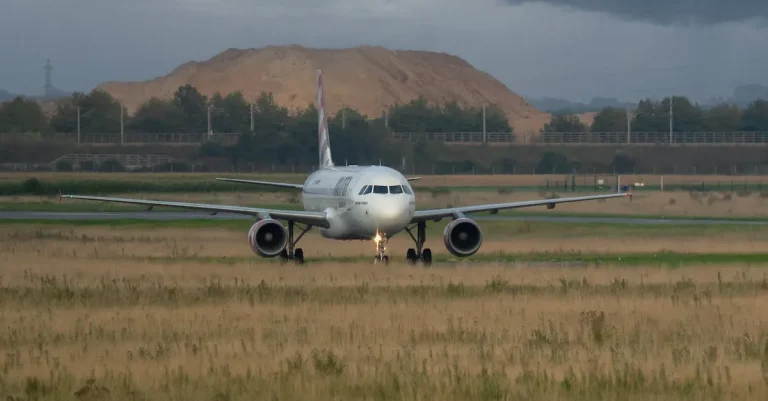If you’ve ever looked out the window during a flight, you may have wondered – what exactly are all those parts and pieces that make up an aircraft’s wings?
The wings of a plane are meticulously engineered to generate enough lift for the heavy metal tube full of passengers and cargo to get off the ground.
Read on to learn about the various elements of a wing and how they work together to achieve flight.
If you’re short on time, here’s a quick answer to your question:
Leading Edge
The leading edge of a plane wing is the foremost part that comes into contact with the air as the plane moves through it. It is designed to handle the forces generated by the air and guide it over the wing in the most efficient way possible.
The leading edge is shaped in a way that reduces drag and creates lift, which is essential for the plane to stay airborne.
First part to contact the air
As the plane moves forward, the leading edge acts as a barrier, splitting the air and allowing it to flow smoothly over the wing.
This part of the wing is responsible for initiating the airflow and plays a crucial role in the overall aerodynamics of the aircraft.
By being the first part to contact the air, the leading edge sets the stage for the rest of the wing to generate lift and maintain stability.
Shapes airflow over the wing
The shape of the leading edge is carefully designed to shape the airflow over the wing. It is usually curved or rounded, allowing the air to smoothly transition from the top to the bottom of the wing.
This shape helps to minimize turbulence and prevent the formation of airflow separation, which can cause a loss of lift and potentially lead to a stall.
The leading edge can also have additional features, such as slats or drooped leading edges, which can further enhance the aerodynamic performance of the wing.
These features can be extended or retracted depending on the flight phase or the desired flight characteristics of the aircraft.
Trailing Edge
The trailing edge is an important component of a plane wing. It refers to the rear part of the wing that extends from the wing root to the wingtip. The trailing edge plays a crucial role in the overall aerodynamic performance of the aircraft.
Rear part of the wing
The trailing edge is located at the back end of the wing and is responsible for controlling the airflow over the wing. It is designed to reduce drag and increase lift, allowing the aircraft to maintain stability and maneuverability during flight.
The shape and design of the trailing edge are carefully engineered to optimize the aircraft’s performance.
The curvature of the trailing edge, known as the camber, can be adjusted to control the lift and drag characteristics of the wing.
By changing the camber, pilots can modify the wing’s lift and drag, enabling the aircraft to climb, descend, or maintain level flight.
This adjustability is crucial for achieving different flight profiles and adapting to various conditions.
Contains flight control surfaces
The trailing edge also houses various flight control surfaces, which are movable parts that allow the pilot to control the aircraft’s attitude and maneuverability. These control surfaces include the ailerons, flaps, and elevators.
- Ailerons: Located near the outer edge of the wing, ailerons are used to control the roll of the aircraft. By moving the ailerons up or down, the pilot can bank the aircraft, enabling it to turn left or right.
- Flaps: The flaps are found along the trailing edge of the wing, closer to the fuselage. They are used to increase the lift of the wing during takeoff and landing, allowing the aircraft to fly at slower speeds.
- Elevators: Positioned at the trailing edge of the horizontal stabilizer, the elevators control the pitch of the aircraft. By moving the elevators up or down, the pilot can raise or lower the nose of the plane, controlling its altitude.
The trailing edge, with its flight control surfaces, gives the pilot precise control over the aircraft’s movement, enabling safe and efficient flight operations.
Wing Tip
The wing tip refers to the outward ends of each wing. It is the part of the wing that is farthest away from the fuselage of the aircraft. The wing tip is designed to improve the aerodynamic performance of the aircraft and reduce drag.
Outward ends of each wing
The wing tip is located at the outward ends of each wing. It is usually curved upwards or downwards, depending on the design of the aircraft.
This curvature helps to control the airflow around the wing tip, reducing drag and improving lift. The shape and design of the wing tip can vary depending on the type of aircraft and its intended use.
Help reduce wingtip vortices
One of the main functions of the wing tip is to help reduce wingtip vortices. Wingtip vortices are circular patterns of rotating air that are created at the tips of the wings when an aircraft is in flight.
These vortices are caused by the difference in air pressure between the upper and lower surfaces of the wing.
By incorporating specific designs in the wing tip, such as winglets or raked wingtips, these vortices can be minimized or controlled.
Winglets are vertical extensions at the end of the wing that are angled upwards. They help to reduce the size and strength of the wingtip vortices, which in turn improves the aircraft’s fuel efficiency.
Raked wingtips, on the other hand, are angled downwards and help to reduce drag by redirecting the airflow around the wingtip.
Wing Skin
Outer surface that encloses internal wing structure
The wing skin is the outermost layer of the plane wing that encloses and protects the internal wing structure. It is like the “skin” of the wing, providing a smooth and aerodynamic surface.
The wing skin plays a crucial role in reducing drag and improving the overall efficiency of the aircraft.
The wing skin is designed to withstand various forces during flight, including air pressure, temperature changes, and the weight of the aircraft.
It must be strong enough to withstand these forces while remaining lightweight to ensure optimal fuel efficiency.
Additionally, the wing skin is responsible for maintaining the wing’s shape and providing structural support. It helps distribute the aerodynamic forces evenly across the wing, allowing for stable and balanced flight.
Made of lightweight, sturdy aluminum alloy
The wing skin is typically made of a lightweight and sturdy material, such as an aluminum alloy. Aluminum alloys are commonly used in aircraft construction due to their high strength-to-weight ratio.
They offer excellent corrosion resistance and can withstand the demanding conditions of flight.
Aluminum alloy sheets are formed and shaped to create the wing skin panels. These panels are then attached to the internal wing structure using fasteners, such as rivets or bolts.
The use of aluminum alloy for the wing skin helps reduce the overall weight of the aircraft while maintaining its structural integrity.
In recent years, advancements in materials technology have led to the development of composite materials for wing skins.
These composites, made of carbon fiber-reinforced polymers, offer even greater strength and weight savings compared to traditional aluminum alloys.
They are increasingly being used in modern aircraft to further improve fuel efficiency and performance.

Ribs
Thin, curved strips that give the wing shape
One of the key components of a plane wing is the ribs. Ribs are thin, curved strips that run perpendicular to the length of the wing. They give the wing its shape, helping to create the aerodynamic profile necessary for flight.
Just like the ribs in our bodies provide structure and support, the ribs in a plane wing serve a similar purpose.
They are typically made of lightweight materials such as aluminum or composite materials to minimize weight while maintaining strength.
Provide structural support
Not only do the ribs give the wing its shape, but they also provide crucial structural support. They help distribute the weight of the aircraft evenly across the entire wing span, ensuring that the wing can withstand the forces encountered during flight.
The ribs are designed to handle the stress and load placed on the wing, helping to prevent any deformation or failure.
Additionally, they help to strengthen the wing, allowing it to withstand the dynamic forces that occur during takeoff, landing, and maneuvering in the air.
When it comes to the structure of a plane wing, the ribs play a vital role in maintaining its integrity and aerodynamic performance. Without them, the wing would lack the necessary shape and support needed for safe and efficient flight.
Spars
The spars are the main structural members of a plane wing that run spanwise, from the wing root to the wingtip.
They play a crucial role in providing strength and rigidity to the wing structure. Spars are typically made of lightweight yet strong materials such as aluminum alloy or composite materials.
They are designed to withstand the various flight loads that the wing experiences during operation.
Main structural members running spanwise
The spars are located inside the wing and are positioned parallel to the fuselage. They provide the primary support for the wing, helping to distribute the weight of the aircraft evenly.
The spars are connected to the fuselage and other wing components, such as ribs and skin, to form a sturdy framework that maintains the wing’s shape and stability.
Carry flight loads & fuel weight
One of the key functions of the spars is to carry the flight loads generated during various maneuvers and flight conditions. These loads include the weight of the aircraft itself, the fuel weight, and the aerodynamic forces acting on the wing.
By distributing these loads evenly along the span of the wing, the spars ensure that the wing structure remains strong and capable of withstanding the stresses encountered during flight.
The spars also play a role in supporting the weight of the fuel carried by the aircraft. As fuel is stored in the wing tanks, the spars bear the weight and ensure that the fuel is properly distributed throughout the wing.
This allows for balanced fuel consumption and helps maintain the aircraft’s stability and center of gravity during flight.
Flaps
Hinged sections on trailing edge
Flaps are hinged sections found on the trailing edge of a plane’s wings. They are designed to increase the surface area of the wing, allowing for more lift during takeoff and landing.
Flaps are typically located on the inner section of the wing, closer to the fuselage.
The ability to adjust the angle of the flaps allows pilots to control the amount of lift being generated.
Increase lift at slower speeds
One of the primary functions of flaps is to increase lift at slower speeds. As an aircraft approaches landing, it needs to reduce its speed to a safe level. However, reducing speed also reduces the lift generated by the wings.
By extending the flaps, the surface area of the wing increases, allowing for more lift to be generated even at slower speeds.
This increased lift allows the aircraft to maintain a stable descent rate and approach speed, ensuring a smooth and controlled landing.
Similarly, during takeoff, extending the flaps helps to generate more lift at lower speeds, allowing the aircraft to become airborne with a shorter runway distance.
It is important to note that the specific configuration and use of flaps may vary between different aircraft types. Some planes may have multiple flap settings, allowing for further adjustments to the angle and surface area of the flaps, depending on the desired flight conditions.
Ailerons
Hinged sections on trailing edge near each tip
The ailerons are hinged sections located on the trailing edge of the wings, near each wingtip. They are movable surfaces that play a crucial role in controlling the roll and banking movements of an aircraft.
Ailerons are typically operated by the pilot through the control yoke or stick, allowing for precise control over the aircraft’s lateral movement.
Control roll and banking
The primary function of the ailerons is to control the roll and banking of the aircraft. When the pilot wants to roll the aircraft to the left, the left aileron is raised while the right aileron is lowered.
This creates more lift on the left wing and reduces lift on the right wing, causing the aircraft to roll to the left. Similarly, when the pilot wants to roll the aircraft to the right, the opposite movement occurs.
The control over roll and banking provided by the ailerons is essential for maneuvering the aircraft during various flight phases, such as turns, banking for landing or takeoff, and maintaining level flight.
Ailerons allow pilots to control the aircraft’s attitude, stability, and direction effectively.
Slats
Movable panels on leading edge
Slats are a crucial part of a plane’s wing design. They are movable panels located on the leading edge of the wing.
These panels can be extended or retracted, depending on the flight conditions and the pilot’s input. When the slats are extended, they create a gap between the wing and the slat itself.
This gap allows air to flow through, changing the shape of the wing and improving its performance during different phases of flight.
The slats are typically controlled by the pilot or through an automated system. In some aircraft, the slats can be extended manually, while in others, they are automatically deployed based on the aircraft’s speed, angle of attack, or other factors.
Conclusion
Aircraft wings may appear simple, but they contain many carefully engineered components crucial for flight. The leading edge, trailing edge, wing tips, skin, ribs, and spars form the basic structure and shape of the wing.
Movable surfaces like flaps, ailerons, and slats allow pilots to control the wings in flight. All these parts work synergistically to enable the incredible phenomenon of heavier-than-air human flight.






